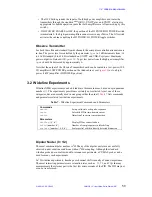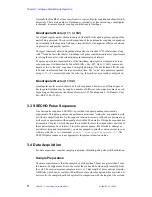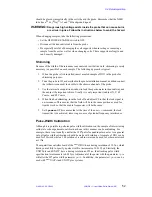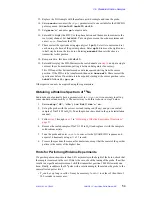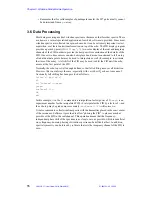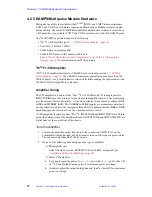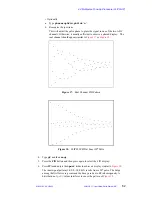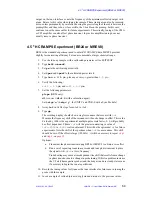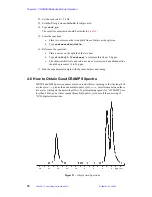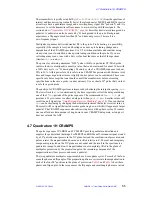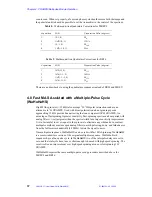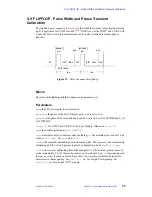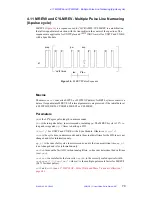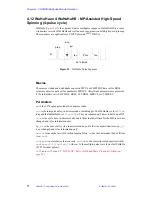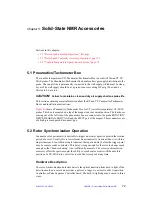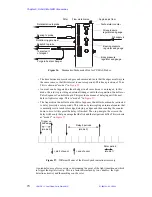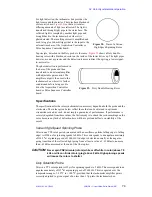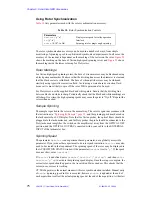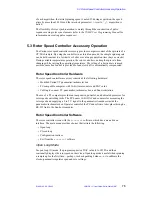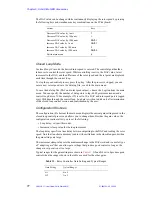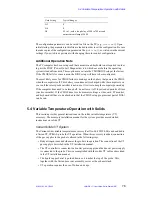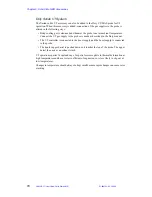
4.5
1
H CRAMPS Experiment (BR24 or MREV8)
01-999162-00 C0402
VNMR 6.1C User Guide: Solid-State NMR
64
output on the tune-interface or note the frequency of the minimum reflected output with
qtune. Return to this value when tuning the sample. Phase transient can also be removed
more-or-less permanently by carefully choosing the precise length of the cable between the
preamplifier and the probe, or if accessible, the l/4 cable on the preamp. In this case,
continue to use the same cables for future experiments. Theoretically, tuning of the CMA
or CPI amplifier can also affect phase transient. In practice amplifier tuning does not
usually remove phase transient.
4.5
1
H CRAMPS Experiment (BR24 or MREV8)
BR24 is the standard experiment used to obtain
1
H CRAMPS data. MREV8 provides
slightly less narrowing efficiency but can accommodate a larger chemical range.
1.
Use the tune-up sample, with a calibrated parameter set for FLIPFLOP
2.
Type
br24
or
mrev8
.
3.
Set
pw
to the calibrated pulse width
4.
Set
tpwr
and
tpwrf
to the calibrated power levels.
5.
Type
tau = 3.5
µ
s
plus any excess
pw
greater than
1.5
µ
s
.
6.
Verify the following:
rof1 = 1.5
µ
s
and
rof2 = 0.2
µ
s
.
7.
Set the following parameters:
p1=pw
(BR24 only).
d1
is correct (
d1=1.0
with a relaxation agent)
Set
trig='n'
(
trig='y'
for UNITY and VXR-S with a Sync Module)
8.
Array
tof
in 1 kHz steps form -1e4 to +1e4.
9.
Type
ga
.
The resulting display should show a single resonance that moves with
tof
.
Measure the frequency shift of the resonance with each change in offset. This value
divided by 1000 is the experimental multiple-pulse scale factor, S. S will probably
be offset dependent. Choose
tof
with the greatest narrowing (a value of
tof=-2000
to
-5000
is often obtained). This will be the optimum
tof
for future
experiments. Note the shift of the spectrum when
tof
is on resonance. This shift
should be zero. If the offset is large (>500 Hz) , it will be necessary to repeat
and
, on
.
Optional:
a.
Fine adjust the phase transient using BR24 or MREV8 to obtain a zero offset.
b.
Run a set of repeating scans in acqi mode and tune phase transient to place
the signal with
tof=0
at zero frequency.
Probe heating may cause a time dependent line shift that results from a change
in phase transient due to a change in probe tuning. If this is a problem increase
the VT air (Chemagnetics probes) and the body air and use steady-state scans
if necessary to begin the run at equilibrium.
10. Record the tuning values for Qtune or the tune interface for future use in tuning the
probe with the sample.
11. Insert a sample of solid adipic acid or glycine and retune to the previous values.

